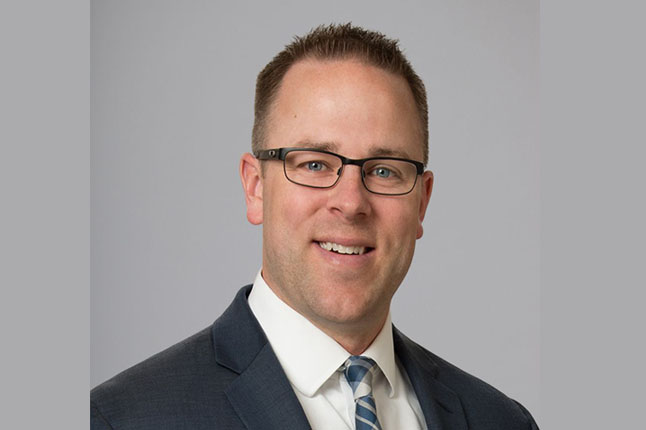
Upon checking my email recently, I received a reminder from Facebook to make sure I wish my grandmother a happy birthday. Aren’t these reminders great? I find myself forgetting fewer birthdays. The only problem, however, is that my grandmother passed away over a year ago. Shouldn’t somebody tell Facebook to stop sending these reminders or have them cancel my grandmother’s Facebook account? Now that she is gone, who can do that?
The Colorado Revised Uniform Fiduciary Access to Digital Assets Act (RUFADAA) has addressed this issue and many more. RUFADAA addresses the issue by setting forth the circumstances whereby a person may be allowed to access a deceased individual’s digital assets while also taking into account the privacy interests of the deceased owner/creator — referred to as the “user” under RUFADAA — of the digital asset.
WHAT ARE DIGITAL ASSETS UNDER RUFADAA?
The term “digital assets” under RUFADAA is defined as “an electronic record in which an individual has a right or interest.” This would include any electronic content stored on a computer or through computer technology such as a cloud. RUFADAA, however, excludes an underlying asset, such as the underlying hardware, from the definition of “digital assets.” Some examples of digital assets include social media accounts (including the postings, photos and videos on the account), email accounts, financial accounts — such as the login information for the account — and any other information stored on computers, on electronic devices or in a cloud — such as PDFs, Word documents, music, pictures and videos.
OBSTACLES TO ACCESSING DIGITAL ASSETS
It can be extremely challenging to access a user’s digital assets upon their death or incapacity. Many custodians of digital assets are unwilling to release digital assets upon the user’s death. One reason for the hesitation is the fear that disclosure of a deceased user’s digital assets might violate the Federal Computer Fraud and Abuse Act. Additionally, even if someone has the capability to access a user’s digital assets — because the person knows the account login information — it may be a violation of the CFAA to do so.
The CFAA criminalizes the unauthorized access of data stored on computer hardware and devices. The CFAA requires authorization by the user. However, the CFAA fails to address how a person may gain authorized access to a deceased user’s digital assets. RUFADAA has attempted to bridge this gap and provide a person with the lawful ability to access a deceased user’s digital assets. RUFADAA has also attempted to alleviate the concerns of custodians by providing that they are insulated from liability for their good faith compliance with RUFADAA.
ACCESSING DIGITAL ASSETS
RUFADAA created an “online tool” concept. This online tool is a mechanism that can be provided by a custodian of digital assets that allows a user to give directions for disclosure or even nondisclosure of digital assets. For example, Facebook’s online tool allows a user to authorize a legacy contact to manage a user’s Facebook account upon the user’s death. This online tool is an effective way for a custodian to allow a user to authorize a person to access digital assets upon the user’s death.
In the event an online tool isn’t provided by a custodian or the user fails to use the custodian’s online tool, RUFADAA allows a user to allow or prohibit in a will, trust, power of attorney or other record the disclosure of some or all of the user’s digital assets to a fiduciary. Under RUFADAA, a fiduciary is an executor, conservator, agent or trustee. Thus, a user may designate in a will that the executor of his or her estate may access the user’s digital assets upon his or her death.
If neither an online tool nor a direction in a will, trust or power of attorney exists, the custodian’s terms of service agreement will govern. This may require the executor of the user’s estate to obtain a court order in order to access the digital assets.
PLANNING CONSIDERATIONS
Upon a user’s death, the executor and/or family members will likely have the responsibility to gather and manage the user’s digital assets. In order to make this transition of digital assets as painless as possible, a user may want to incorporate the following recommendations:
First, a user should take an inventory of all digital assets. This inventory should list the custodian of each digital asset and the associated login credentials.
Second, a user should determine whether the custodian of each digital asset has an online tool. To the extent an online tool is available, the user should complete the online tool and provide the directions for the disclosure (or nondisclosure) of the digital asset. The directions typically include who will be authorized to access the account associated with the digital asset and the ability of that person to access the digital asset.
Third, a user should incorporate language into his or her estate planning documents (i.e., will, revocable trust or power of attorney) granting access to the user’s fiduciary (i.e., executor, trustee or agent) for all digital assets, including the authority to manage all digital assets. If the user allows the fiduciary to access all digital assets, there will be no obstacles to obtaining digital assets upon the user’s death in the event the user fails to complete an online tool. In addition, to the extent a direction for a digital asset is included in an online tool and an estate document, RUFADAA provides that the online tool will govern.
While RUFADAA and the implementation of the recommended planning considerations do not guarantee that there will not be any issues with accessing and managing a deceased user’s digital assets, it will substantially minimize any issues that may be associated with accessing digital assets upon a user’s death.
— James Judd is an associate at BakerHostetler

